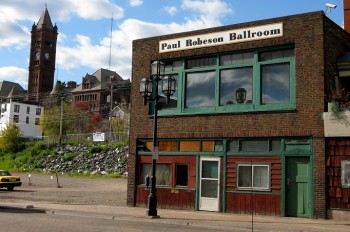Paul Robeson in Duluth
What is Paul Robeson’s connection to Duluth? For some reason I’ve never wondered about this before. Today someone asked me.
Paul Robeson was a singer, actor and football player who was involved in the Civil Rights Movement. You can read about him on Wikipedia and numerous other places on the Internet.
The Paul Robeson Ballroom is part of the Kozy Apartments complex, which has been shuttered since 2010 due to three arson fires. (Photo above by Daniel Kerkhoff.)
There is a one-man show, The Tallest Tree in the Forest, running at Arena Stage in Washington D.C. through Feb. 16, that mentions Robeson was in Duluth in 1947. (The show is probably based, at least in part, on the 1977 documentary film The Tallest Tree in Our Forest.)
That’s all we’ve got. Help fill in the blanks.
Recommended Links:
Leave a Comment
Only registered members can post a comment , Login / Register Here















8 Comments
Lisa Swanson
about 11 years agoPaul Lundgren
about 11 years agohbh1
about 11 years agohbh1
about 11 years agoBrad Snelling
about 11 years agohbh1
about 11 years agoBrad Snelling
about 11 years agoJP Rennquist
about 11 years ago